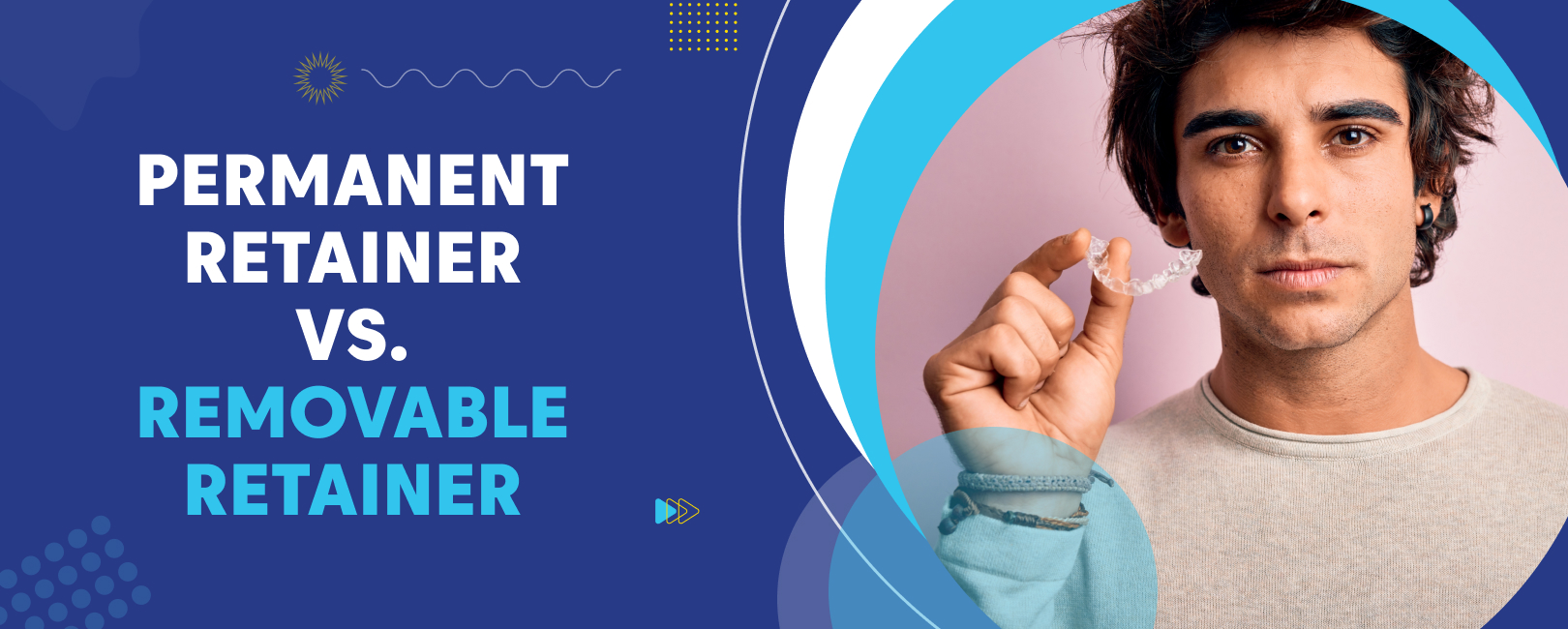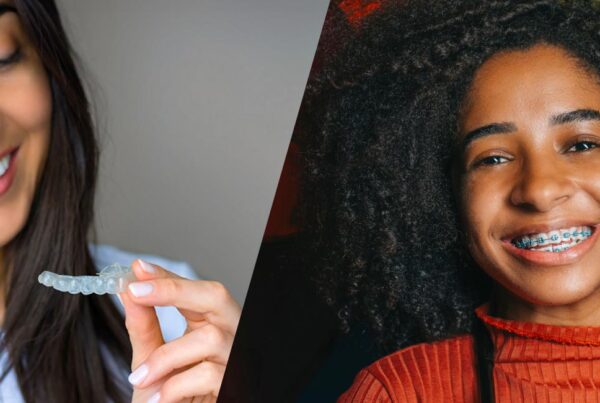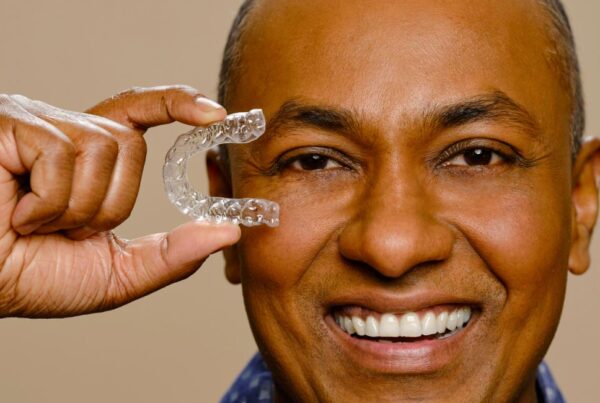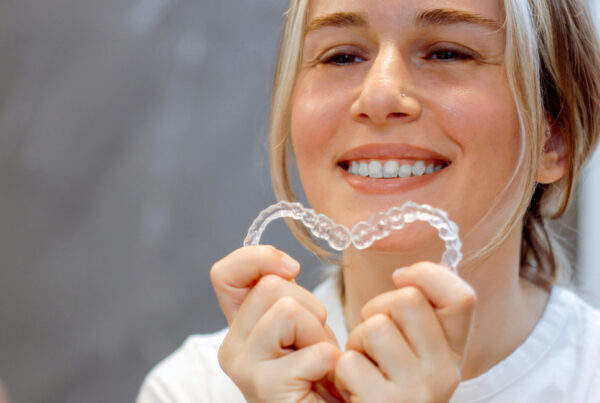- What is a Retainer?
- How Does Permanent Retainers vs Removable Retainers Work?
- What is a Permanent Retainer?
- What is a Removable Retainer?
- Compare the Cost Factors of Permanent Retainer vs. Removable Retainer
- What Does an Orthodontic Recommend?
- Which One is Better: Permanent Retainer vs. Removable Retainer?
- Conclusion
After orthodontic treatment, you wear an appliance to keep the teeth in their new position and there are two types of retention appliances: Permanent Retainer vs removable, each has its own advantages and disadvantages, and knowing the differences between them is crucial.
What is a Retainer?
After orthodontic treatment, the bone surrounding your teeth may become approximately 24% thinner, and this can potentially result in faster tooth shifting, a retainer helps prevent such shifts from happening until the bone becomes denser and more stable.
For this reason, it is very important to place them immediately after your treatment is completed because, as we have already said, teeth tend to move back to their previous position and become misaligned, and the orthodontist is responsible for placing them to stabilize the teeth for as long as possible.
Remember that every patient who has undergone orthodontic treatments to correct the position of their teeth must wear retainers to keep teeth in their correct alignment.
How Does Permanent Retainers vs Removable Retainers Work?
During the dental retention phase, two types of retainers can be used: permanent and removable. Let’s discuss the differences between them.
What is a Permanent Retainer?
The term “Permanent Retainer” indicates exactly its purpose: it remains on your teeth permanently to prevent them from shifting, and you may have this retainer on your teeth for the rest of your life.
Permanent or fixed retainers are made of a metal wire that’s bonded to the lingual or tongue side of your front teeth. The wire is usually smooth and solid or may have a braided texture. It’s glued to your teeth and adjusted to fit your bite to keep your teeth from misalignment.
Permanent Retainers are often recommended by orthodontists for patients who have difficulty following guidelines for removable retainers.
Because they are hidden on the back side of your teeth for a better cosmetic look, they are functionally invisible compared to removable retainers. In the long term, they have a higher success rate in maintaining straight teeth for many years.
Benefits of Permanent Retainers
There are many benefits of a Permanent Retainer, including:
- Convenience: You don’t have to remove it, making it easier to maintain the position of your teeth.
- More Discreet: It is bonded behind your teeth, so only you are aware of its presence.
- No Effect on Your Speech: It has minimal to no impact on your speech, allowing you to feel confident wearing it in public.
- More Secure: As it is firmly bonded with dental glue, you don’t have to worry about misplacing or losing it.
- Durability: It is resistant to damage caused by regular use of your mouth during daily activities.
- Continuous Working: Since the retainer remains in place at all times, it effectively maintains the alignment of your teeth.
Drawbacks of Permanent Retainers
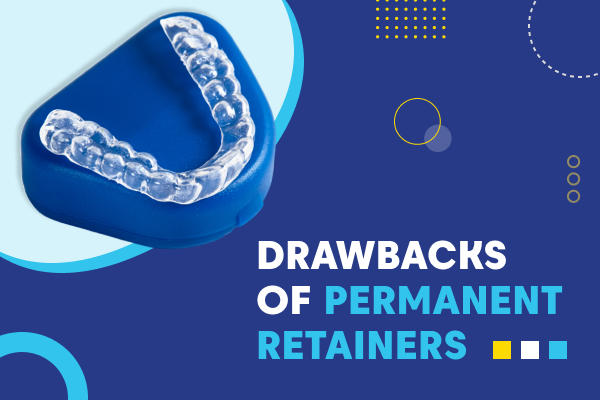
There are also some drawbacks of wearing a Permanent Retainer, which can include:
- Longer and Uncomfortable Process: The process of attaching a Permanent Retainer can be time-consuming and uncomfortable. It may take up to an hour to bond the retainer to your teeth.
- Oral hygiene Requires Additional Effort: Maintaining oral hygiene with a Permanent Retainer requires additional effort. Brushing and flossing around the retainer properly is essential. Neglecting proper cleaning can increase the risk of cavities and gum disease.
- Discomfort and Tongue Irritation: The continuous presence of a metal object in your mouth can cause discomfort, as your tongue may rub against the wire.
- Food Impact: Biting into hard or tough foods, like whole apples or tough steaks, can potentially break the wire. Additionally, the consumption of sugary foods can deteriorate the gluing material, potentially compromising the retainer’s bond to the teeth.
What is a Removable Retainer?
Many people prefer removable retainers because once you get rid of braces, the last thing you want is another orthodontic appliance in your mouth. Removable retainers offer certain advantages, such as the ability to enjoy your favorite foods that you can not eat during braces treatment.
Removable retainers also make oral hygiene easier, as there is no need to floss or use dental picks around wires or brackets. Additionally, they often come in various colors and designs, adding a fun element.
You must care for your removable retainer daily for it to be effective. Let’s examine the advantages and disadvantages of this type of retainer.
Benefits of Removable Retainer
In addition to maintaining tooth position, removable retainers provide additional advantages. These include:
Convenience: Removable retainers are easily and quickly removable whenever desired.
Simpler Cleaning: They are easier to clean compared to Permanent Retainers.
Improved Oral Hygiene: Brushing and flossing become more straightforward as the retainer can be taken out.
Drawbacks of Removable Retainer
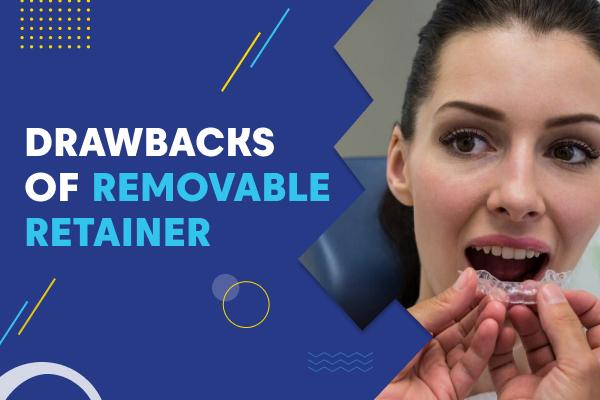
While removable retainers are simple to take out, there is a risk of forgetting to wear them or misplacing them accidentally. Other drawbacks include:
- Potential for Loss: These retainers can be mistakenly thrown away or misplaced after removal.
- Increased Responsibility: Proper adherence to wearing instructions becomes your responsibility.
- Bacterial Buildup: Inadequate cleaning of the retainer can lead to increased bacteria in and around the teeth.
- Wear and Replacement: Removable retainers may require more frequent replacement due to wear and tear, especially if you have a teeth-grinding habit.
Compare the Cost Factors of Permanent Retainer vs. Removable Retainer
The cost of a Permanent Retainer can range from $200 to $500 for a single retainer, and you might need one for both your top and bottom teeth, which would double the cost. For removable retainers, the initial cost is between $150 to $300. However, since they can be easily lost or damaged, you might need to replace them, making them more expensive over time.
What Does an Orthodontic Recommend?
After completing your teeth straightening treatment, your orthodontist might suggest using either removable or Permanent Retainers. The decision between the two will depend on the specific needs of your orthodontic treatment. It is important to have a thorough discussion with your orthodontist to determine which type of dental retainer is most suitable for you to make sure that you make the right choice for maintaining your newly aligned teeth.
Which One is Better: Permanent Retainer vs. Removable Retainer?
| Category | Permanent Retainer | Removable Retainer |
| Appearance | Less visible, as it is bonded to the back of the teeth | More visible, as it is worn on the outside of the teeth |
| Comfort level | Generally more comfortable, as it is a fixed solution and does not require removal | Can be uncomfortable or annoying to remove and insert daily |
| Patient compliance | Higher compliance, as it is permanently attached and cannot be forgotten or lost | Lower compliance, as it requires regular removal and insertion, increasing the likelihood of being lost or forgotten |
| Dental Care | Brushing and flossing around the retainer can be more challenging, requiring special tools and techniques | Easier to clean, as it can be removed for daily cleaning |
| Overall Effectiveness | Effective in maintaining tooth alignment, but may not be suitable for all cases | Effective in maintaining tooth alignment, but compliance can impact effectiveness over time |
Conclusion
Wearing a retainer is crucial for maintaining the result you’ve achieved with orthodontic treatment and preventing teeth from shifting. If you’re unsure about which retainer is best for you, talk to your orthodontist about a decision between a permanent vs removable retainer and ask for their recommendations based on your lifestyle. They will explain the benefits of each type of retainer and help you make an informed decision to ensure your smile remains in good shape.


